South Asian ethnocultural food beliefs and practices during the perinatal period.
General health beliefs
Health was defined in holistic terms and included both physical and mental wellness. Women also included the absence of disease or illness, being physically fit, being able to sleep, and being able to perform normal activities in their descriptions of health.
How food affects health
Balanced eating was important for health. A balanced meal consisted of several dishes such as rice or chapatti, protein such as meat or lentil curry, and vegetables.
Fresh foods were preferred, and leftovers, preserved foods, and “outside” foods (i.e. not prepared at home) were avoided. Women believed that their eating practices would directly influence the health and development of their child. A belief among Nepalese, Pakistani and Indian mothers was that they needed to “eat for two” during the perinatal period. As such, many increased their snacks and/or increased consumption of specific foods, such as milk. This practice was enforced by the family of some women who monitored food intake.
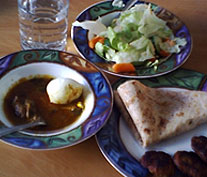
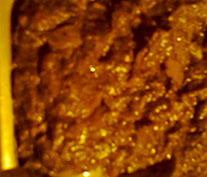
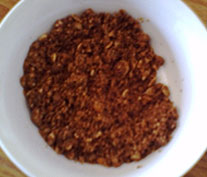
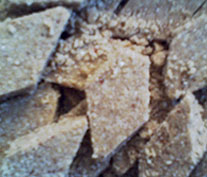
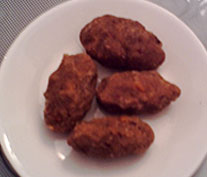
Many South Asian women make food choices based on Ayurvedic medicine. Practices center on the desire to maintain balance within the body, which is composed of 5 elements and 3 humors. A key way to balance the body is through food consumption. Foods are conceptualized as having qualities (not temperature or spiciness) that place them on a continuum from “hot” to “cold” with “neutral” in the middle. Temperature does affect the “hotness” and “coldness” of foods as does the season (i.e. hot, dry season versus cold, wet season).
During pregnancy, women avoid hot foods as the body is already in a hot state and must be balanced. If the body becomes too hot, miscarriage may result. ‘Hot’ foods avoided by women during pregnancy included certain fruits and vegetables, meats, eggs, and spices. Fish, chicken, eggs, and nuts were also all considered ‘hot’ foods. Fruits and vegetables considered to be ‘hot’ and important to avoid included papaya, mango, eggplant, and bitter gourd. Some dried fruits, such as dates, were also avoided, as were spices such as cloves and black pepper. Cold foods are particularly important to consume during the first trimester in order to avoid miscarriage.
Following pregnancy, it is very important to consume hot foods to restore the body and help shed “bad blood.” A ‘hot’ food commonly consumed by Punjabi Indian and Pakistani women after birth was panjiri, a food prepared with flour, ghee, gond/gondh, nuts, dried fruits, seeds, and spices (such as ginger, fennel, cardamom and carom).
There are variations of panjiri based on cultural background and geographical location. Khoa pinni is also consumed by Punjabi women in India and Pakistan and is prepared with milk solids, flour, ghee, sugar, spices, and nuts and is oblong or ball shaped. Golpapdi is consumed by Gujrati women and is prepared with flour, seeds, jaggery, nuts, spices and is diamond shaped.
South Asian women consumed more of the foods that they considered to be healthy due to their nutritional and Ayurvedic properties and cultural importance, as well as more foods with perceived benefits for the fetus and mother herself. Vegetables, especially green leafy varieties, were mentioned by all South Asian participants to be especially healthy to consume during the perinatal period. Fruits were consumed often as snacks, and may be noted for their skin-lightening effects. Roti, moong dal, spinach saag, and yogurt (Indian, Punjabi)
Soups were consumed by Nepali, Bhutanese and Pakistani women during pregnancy for energy and to promote healthy bones. Soups made from meat and/or bones were particularly important for women. Beans and pulses were an important part of many women’s normal diets. Rice and breads like chapatti, roti, and naan accompanied most meals. Milk and milk products (including yogurt and paneer) were common, and saffron or kungumam may be added to milk by Indian women as they are traditionally believed to produce a light-skinned baby.
Women actively avoided foods that they believed were unhealthy in general, were particularly harmful to the health of their pregnant body or their baby, and would cause them discomfort or pain. Many Indian, Nepali and Bhutanese women chose to avoid spicy foods during pregnancy, as they believed that it would give them heartburn or cause the baby to have dark skin or an angry disposition. Fried, oily foods were avoided by some Indian women as they were viewed as unhealthy, and also avoided by Pakistani women who believed that they would cause the baby to slip out of the body. However, Pakistani women consume butter, ghee, and oil in the final month of pregnancy in order to ensure a quicker and easier labor.
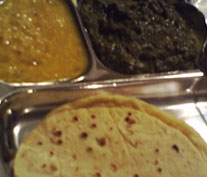
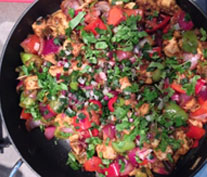
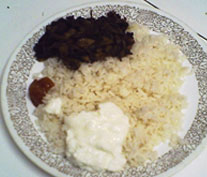
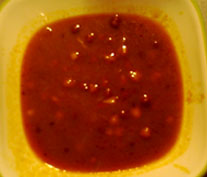

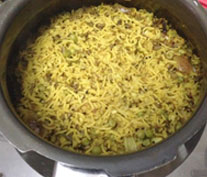
Women consumed foods that would help them heal, were beneficial for the baby, and would aid in lactation. Women avoided foods considered unhealthy due to their perceived negative effects on the baby and mother. Following birth, women may view themselves as weak and in need of nutritious food in order to gain strength.
Meat, such as beef and chicken, was mentioned by Pakistani, Nepali and Bhutanese women as a food to consume after birth in order to regain strength. It is important to note that many Hindus, Buddhists, and Jains are vegetarian, so religious affiliation is closely connected with meat consumption; dietary practices related to religious beliefs cannot be stereotyped. Lentils, another protein source, are seen to aid in lactation, and urud dal (black lentils) aid in contracting the uterus. Soups made with meat or beans and pulses were also important for most women.
Light foods were mentioned by Indian and Pakistani participants as being important because they are nutritious and easy to digest. Light foods included porridge for Pakistani women and khichṛī (a dish made from rice and lentils), batata poha (a dish made from pressed rice and potatoes), lentils, thin roti, porridge, seiwan (a dish made from vermicelli noodles, milk, sugar, and ghee) and overcooked rice among Indian women. However, some Pakistani, Indian, and Nepali women also believed that they should be incorporating rich foods such as butter, ghee, and oil into their postnatal diet
Indian and Nepali women mentioned the importance of several spices in the postpartum period. Spices such as methi (fenugreek), jwano (thyme), ajwain (carom), jeera (cumin) and fennel are consumed due to their ability to increase lactation, contract the uterus, increase health, and avoid gas.
Indian, Nepali and Bhutanese women stressed the importance of avoiding spicy foods as they can cause the baby discomfort by passing through breast milk. Bhutanese women also avoided sour foods, while Pakistani women avoided hard foods, such as carrots, and Indian women avoided gas-producing foods like dahl (lentils) and potatoes.
Differences in Food Practices and Beliefs within South Asia
Differences in health beliefs and practices occur within South Asia, and this affects how women eat during the perinatal period. Differences are based on religious affiliation, social status (caste and class) and area of origin (e.g. fish consumption tends to be more common from those residing in coastal areas of South Asia).